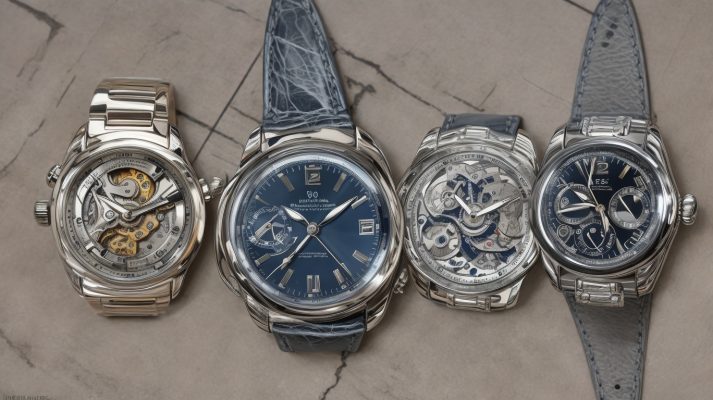Style
Timeless Fashion: Trends in Wristwatch Design Across the Decades
Wristwatches have long been an essential accessory, serving not only as functional timepieces but also as stylish statements reflecting the tastes and trends of their respective eras. While fashion may be ever-changing, certain elements of wristwatch design have stood the test of time, evolving gracefully to remain relevant in an ever-shifting landscape of trends. Let’s take a journey through the decades to explore the enduring appeal of wristwatch design and the timeless elements that continue to captivate enthusiasts around the world.
The Roaring Twenties: Art Deco Elegance
The 1920s, often referred to as the Roaring Twenties, marked a period of unprecedented social and cultural change. This era witnessed the rise of Art Deco, a design movement characterized by geometric shapes, bold colors, and lavish ornamentation. Wristwatches of the time embraced this aesthetic with sleek rectangular or tonneau-shaped cases adorned with intricate detailing such as enamel work, filigree, or gemstones. Slim profiles and delicate bracelet straps further enhanced the elegance of these timepieces, making them coveted accessories among the fashionable elite.
The Swinging Sixties: Space Age Innovation
The 1960s ushered in a spirit of innovation and optimism, fueled by advancements in technology and the space race. Wristwatch design reflected this futuristic mindset, with manufacturers embracing unconventional materials such as plastic, fiberglass, and stainless steel. The era saw the emergence of iconic models like the Omega Speedmaster, famously worn by astronauts during NASA’s Apollo missions. Sleek, minimalist dials with bold markers and luminescent hands became hallmarks of this era, embodying the spirit of exploration and progress.
The Cool Eighties: Sporty Sophistication
The 1980s epitomized excess and extravagance, with fashion trends veering towards bold colors, oversized silhouettes, and conspicuous branding. Wristwatches of this era embraced a sporty aesthetic, with chunky cases, integrated bracelets, and multifunctional features catering to the active lifestyles of consumers. Iconic designs such as the Rolex Submariner and the TAG Heuer Monaco epitomized the marriage of style and functionality, becoming synonymous with luxury and adventure. Digital displays also gained popularity during this time, offering innovative features such as chronographs, alarms, and dual time zones.
The Modern Era: Timeless Elegance
In the present day, wristwatch design continues to evolve, blending elements of past eras with contemporary sensibilities to create timepieces that are both timeless and relevant. Classic designs such as the Cartier Tank and the Rolex Datejust retain their enduring appeal, exuding understated elegance and sophistication. Meanwhile, brands are exploring new materials, innovative complications, and sustainable practices to meet the demands of a discerning clientele increasingly conscious of both style and ethics.
Conclusion
While fashion trends may come and go, certain elements of wristwatch design remain timeless, transcending the constraints of time and trend. From the Art Deco elegance of the 1920s to the space-age innovation of the 1960s and the sporty sophistication of the 1980s, wristwatches have continuously evolved to reflect the spirit of their respective eras while retaining a sense of timeless appeal. In today’s ever-changing landscape of fashion, wristwatches stand as enduring symbols of craftsmanship, style, and innovation, embodying the perfect union of form and function.




